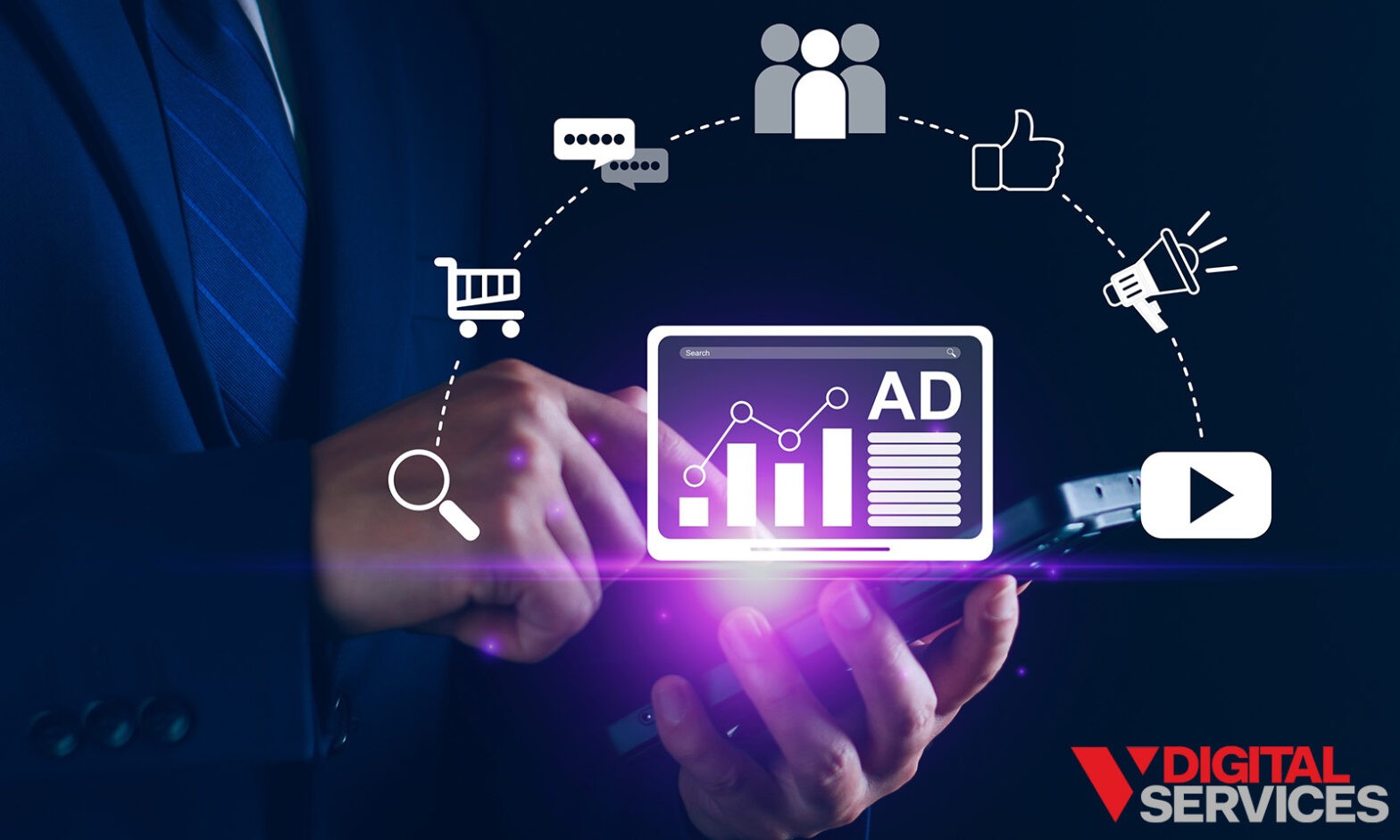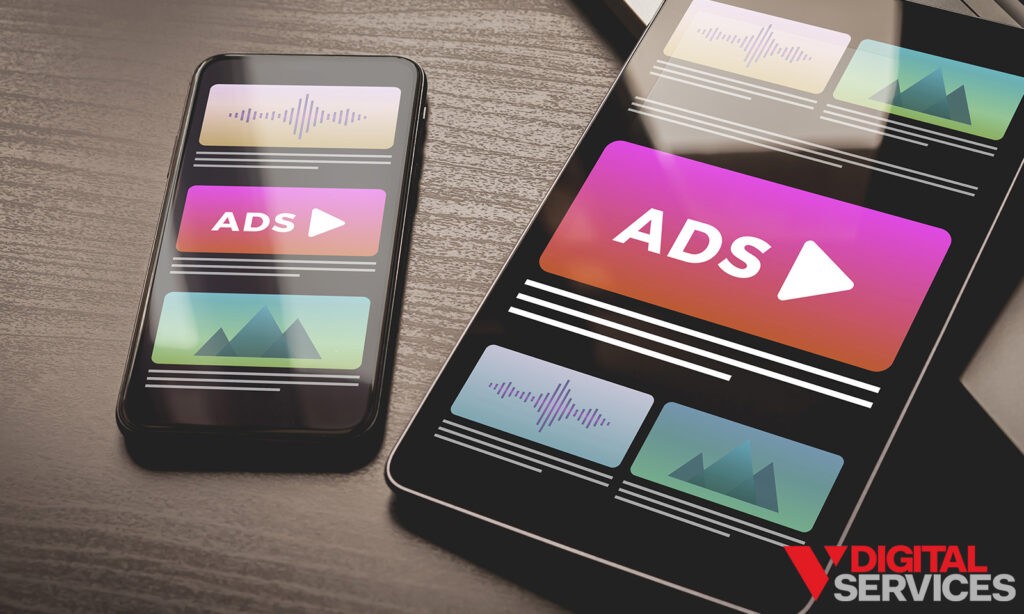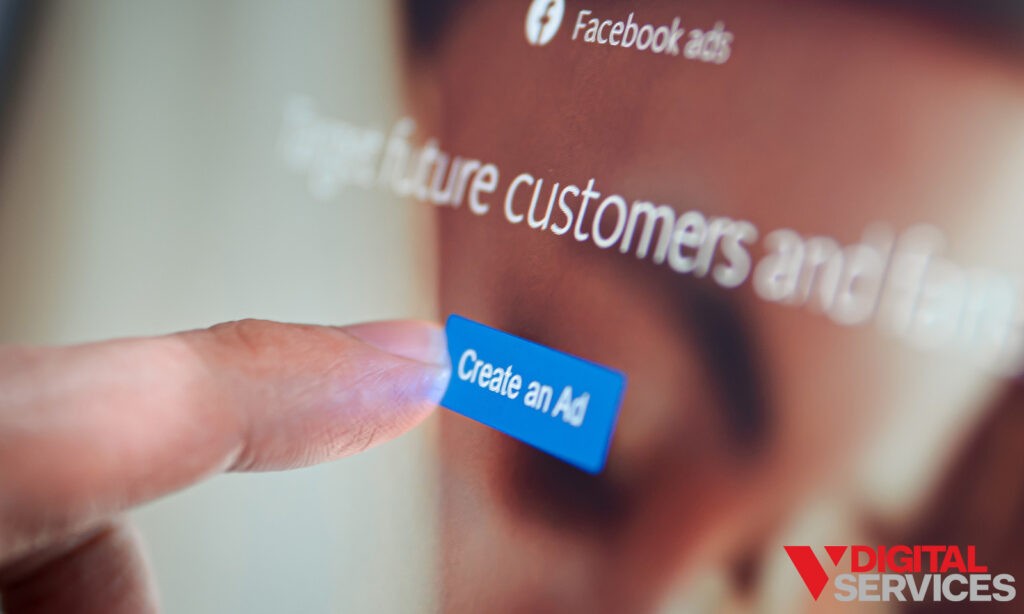For any business, staying ahead of the curve is a must – especially when it comes to digital marketing. Among the many different tools and techniques available, one stands out for its potential to transform your business: programmatic advertising. Programmatic ads have shifted the paradigm from manual ad placements to an intelligent, data-driven strategy, revolutionizing the way businesses approach online marketing.
In this in-depth guide, we’re diving into everything you need to know about programmatic advertising, including how it works and how it can benefit your business. Whether you’re a seasoned marketer or a business owner looking to enhance your advertising game, we’re aiming to offer insights that can catapult your campaigns to the next level.

What is Programmatic Advertising?
Programmatic advertising is the automated process of buying and selling ad space in real time using data and algorithms to decide which ads to buy and how much to pay for them. Gone are the days of manual negotiations and pre-set prices. Instead, every impression is auctioned off in milliseconds, ensuring that ads are displayed to the right person, at the right time, in the right context.
How Does Programmatic Advertising Work?
Think of programmatic advertising as a stock exchange for advertisements. Advertisers and publishers enter this marketplace with their respective goals: advertisers want to showcase their ads to the most relevant audience, and publishers want to monetize their content.
Here’s a simplified breakdown:
- Advertisers set criteria: Before the ad is displayed, the advertiser sets parameters for their campaign. This can include the type of audience they want to target, the amount they’re willing to pay, and the type of ad they want to display.
- Real-time auction: When a user visits a website, if they match the advertiser’s criteria, an auction takes place. In mere milliseconds, various advertisers bid for the chance to display their ad to that particular user.
- Ad Display: The highest bidder wins the auction, and the ad is instantly displayed to the user.
From its earliest beginnings, programmatic advertising has continuously evolved and adapted to meet the shifting needs and wants of consumers and businesses alike. Initially used for remnant inventory, now the dominant method of trading digital ad space, including rich media, video, and even traditional TV spots.
Key Benefits of Programmatic Advertising
1. Advanced Audience Targeting Capabilities
Programmatic advertising platforms utilize sophisticated data analytics to pinpoint specific audiences based on a variety of criteria, such as behavior, interests, demographics, online habits, and even past purchasing patterns. This granular targeting ensures that businesses aren’t merely casting a wide net but are instead focusing their efforts where they’re most likely to see a return.
The precision enables businesses to serve ads to a highly segmented audience, ensuring relevancy and increasing the likelihood of a positive interaction. Beyond the metrics, businesses can also use this benefit to better cater to their customers. With effectively tailored ads, consumers no longer feel bombarded by general advertising but instead, experience messages that resonate with their unique preferences and needs. This customization fosters a sense of connection between the brand and the consumer, increasing trust and loyalty in the long run.
Overall, the precision allowed by programmatic ads not only optimizes advertising spend but also enhances the overall user experience, leading to improved brand perception and higher conversion rates.
2. Increased Audience Reach
In the past, traditional advertising methods, like TV and print ads, boxed brands into a corner, restricting them to specific platforms or audience segments. These methods came with their own sets of challenges, such as geographical limitations and difficulty in adapting to rapidly changing consumer behavior.
In contrast, programmatic advertising offers the flexibility and agility to connect to multiple digital channels simultaneously, from social media platforms to web browsers and mobile apps. This not only ensures your message is cast across a far-reaching digital landscape but also amplifies brand visibility exponentially. By tapping into various channels, your brand’s message seamlessly integrates into the daily online interactions of users, giving a continuous brand presence.
Additionally, the vast size of the digital realm itself means that you are naturally able to diversify your audience, capturing the attention of different age groups, interests, and regions. This creates opportunities to penetrate newer markets and demographics, potentially uncovering untapped consumer segments and broadening your customer base.
3. Automated Advertising Tasks
Automation in programmatic advertising means less manual work. Through this automation, campaign settings, bid adjustments, and ad placements can be pre-set to run without constant oversight, adhering to pre-defined criteria and real-time data inputs. This not only streamlines the ad delivery process but also ensures that campaigns are dynamically optimized for the best results.
By removing the necessity to micromanage every aspect of advertising, businesses are freed to dive deeper into overarching strategy and innovation. Also, the time saved can be redirected to improving other aspects of the business, from product development to customer service.
4. Flexible Budget Options
The financial aspect of advertising can often be intimidating, with traditional methods locking businesses into budgets with little room for adjustment. Programmatic advertising shatters these constraints.
With the dynamic nature of bidding and placements, businesses can allocate funds on the fly, depending on the changing landscape of their campaign’s performance. If a particular ad set is showing promising engagement, it’s easy to ramp up the budget in that direction, ensuring momentum isn’t lost.
Conversely, underperforming sectors can be reevaluated or dialed back, conserving resources. This flexibility is especially resourceful in volatile markets where consumer behaviors can shift rapidly. With programmatic advertising, businesses have the agility to navigate these changes, ensuring their budgets are always optimized for the best outcomes.
5. Measurable Campaign Results and Optimization in Real-time
For businesses looking to benefit from digital advertising, real-time analytics is nothing short of a game-changer. With programmatic advertising at the helm, there’s no more guesswork when it comes to how campaigns are performing. The moment an ad goes live, metrics start flowing in, painting a clear picture of audience engagement, click-through rates, and overall performance.
This instantaneous feedback loop allows businesses and advertisers to pivot swiftly, tweaking elements that aren’t hitting the mark and amplifying those that are. Such dynamic adjustments can differentiate between a mediocre campaign and a wildly successful one.
Also, the diversity and richness of real-time data simplify the often complex landscape of digital advertising, providing granular insights into what’s resonating with audiences and what’s not. This not only fine-tunes current campaigns but also offers invaluable lessons for future ones. With this continuous cycle of learning and adapting, businesses are poised to capture their audience’s attention and achieve a more significant impact with each campaign. By leaning into these real-time analytics, advertisers can elevate their current strategies and set the stage for long-term advertising success.
6. Improved Return on Investment (ROI)
Programmatic advertising’s precision targeting and real-time optimization lead to better campaign outcomes. By harnessing data-driven insights, campaigns become more potent, directly targeting segments that are more likely to convert. This razor-sharp focus minimizes ad wastage, amplifying the potency of every dollar spent.
Over time, these increments in efficiency translate to a tangible uptick in ROI. As ads become increasingly relevant to their viewers, the chances of conversion grow. By delivering valuable content to a willing audience, businesses don’t just increase their ROI; they also lay the foundation for lasting customer relationships, further enhancing long-term profitability.
7. Precision and Efficiency
While consumers engage with a massive amount of content daily, fostering meaningful connections becomes more crucial than ever before as programmatic advertising’s algorithms bring an unparalleled level of finesse to this endeavor.
By continually analyzing user behaviors and engagement patterns, these algorithms ensure that ads reach those most likely to be interested, which translates to fewer misfires and a higher engagement rate. Not only does this lead to a better utilization of the advertising budget, but it also paves the way for a stronger brand-consumer relationship.
When consumers are consistently served content that resonates with their preferences, they begin to see the brand as attuned to their needs, fostering trust and loyalty.
8. Access to Multiple Ad Exchanges
Programmatic advertising isn’t limited to a single platform. Businesses have the advantage of accessing multiple digital advertising platforms at once, increasing potential ad placements and diversifying audience reach. This cross-platform approach offers brands a holistic digital presence, ensuring consistent messaging and brand experiences for users across various platforms.
9. Enhanced Creative Opportunities
Programmatic advertising adds a creative twist to automated marketing, allowing real-time personalization with Dynamic Creative Optimization (DCO). Ads can transform on the fly, adapting to the viewer’s preferences and behaviors.
This means that two viewers might see different versions of the same ad, each tailored to their unique profiles. Having the freedom to refine your creative delivery ensures deeper engagement, as viewers see content that aligns closely with their interests.
10. Transparent Reporting
In the age of data-driven decision-making, programmatic platforms stand out by offering in-depth insights. And the more granular the data, the better the decision-making.
Programmatic advertising is unique in its capability to provide unparalleled transparency. Advertisers can dissect campaign performance, breaking down audience engagement, platform performance, and individual ad metrics.
With such detailed reporting at their fingertips, businesses can scrutinize every facet of their campaigns, ensuring no opportunity for optimization is missed.
Why is Programmatic Advertising Important?
When you consider the benefits, the answer is simple: through the combination of advanced targeting, real-time data, and automation, programmatic advertising delivers more effective campaigns. Ad messages are tailored, relevant, and served at the right time, increasing the likelihood of conversion. Such precisely targeted campaigns can significantly enhance brand loyalty and customer lifetime value.
Ultimately, the benefits of programmatic ads can significantly bolster your marketing efforts across the board – why wouldn’t you take advantage of that?
Reap Maximum Programmatic Advertising Benefits for Your Business
Whether you’re new to programmatic ads or you’re ready to upgrade your approach, this digital marketing method can deliver impressive results. But before you begin, you’ll want a team of experts on your side – and that’s where V Digital Services comes in.
Our talented team of digital marketers have extensive experience in the digital marketing arena, and we take pride in our reputation as industry innovators. With a proven track record for success – including campaigns for businesses of all types and sizes – V Digital Services is well-equipped to propel you towards your goals.
Are you interested in learning more about the benefits of programmatic buying? Connect with the V Digital Services team to start the conversation today.
Photo Credits:





 PREVIOUS
PREVIOUS